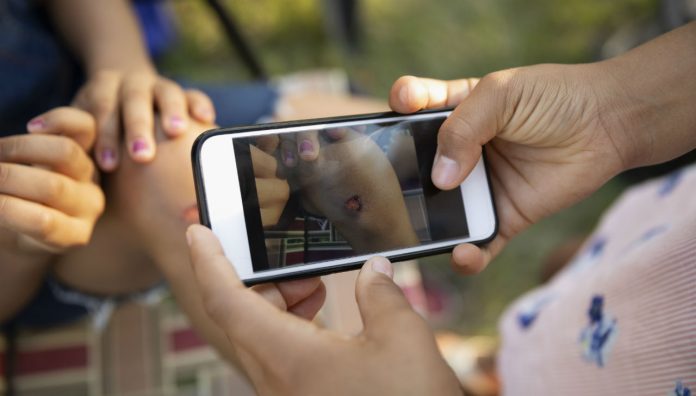A new study suggests that consumer-generated health data (CGHD) could empower patients, improve health outcomes, and reduce instances of self-diagnosis online.
The Australian research examined the efficacy of CGHD using a 2-study research agenda. The first component of the research, ‘study 1’ conducted semi-structured interviews with 60 patients, carers and healthcare practitioners who used consumer-generated photography throughout the course of their treatment.1
Meanwhile in study 2, researchers trained 30 parents of children undergoing laparoscopic appendectomy surgeries to take photographs of their children’s surgical site wounds every two days and email them to the staff for the 10 days after the procedure. They then conducted interviews with the parents.1
The data collected from both studies indicated that CGHD could have a positive impact on treatment. An analysis of responses indicated that it aided healthcare practitioners in diagnosis and management, improve communication, and can reduce unnecessary consultations.1
Researchers also said that CGHD improved communication between healthcare providers and patients.
‘CGHD is another tool to manage the patient journey, allowing providers an opportunity to assure consumers that healing is occurring,’ the report read.1
Patients also responded positively to the use of CGHD, reporting that it helped them to make sense of their condition, instigated a greater sense of personal responsibility for their healthcare outcomes and helped to promote healthy behaviours.1
Researchers noted that healthcare practitioners willingness to embrace CGHD could reduce patients’ impulses to self-diagnose online.1
‘Prescribing data collection may reduce instances of self-diagnosis. If data are supported then it can lead to higher service satisfaction, higher service confidence, and an improved therapeutic relationship,’ the report read. 1
While healthcare practitioners said that they would be reluctant to diagnose a condition based only on CGHD, they said that it could be useful for treating patients in rural areas where access to in-person healthcare is limited.1
Pharmaceutical Society of Australia Project Pharmacist Jarrod McMaugh said that the idea of CGHD is not new, but the ready availability to high-quality photos through camera phones has allowed for increasingly high quality data, that is easy for patients to generate.
‘At its core, all information provided by the patient is “consumer-generated,” the difference is, people are now recording this information rather than relying on recall, so in some instances it is more reliable,’ he told Australian Pharmacist.
Mr McMaugh, who is also on an International Pharmaceutical Federation working group examining digital health, said that photographs are particularly useful, as they allow pharmacists to observe changes in a patient’s condition. He pointed to rashes, lesions and erythema, for example, which can be photographed multiple times over the course of several days.
However, he noted that not all CGHD is clinically useful. Devices that track steps, heart rate and sleeping patterns, for example, can be useful for looking at general behavioural trends, but are not always accurate.
Even so, he said that CGHD can be highly useful for both patients and pharmacists, when it is managed correctly.
‘Overall, anything a person does to capture data that can help a pharmacist answer their health questions is good, but context is always important, and part of the pharmacists role in these situations is tempering a person’s expectations for the usefulness of some consumer generated data,’ he said.
References:
- Burns K, McBride CA, Patel B, FitzGerald G, Mathews S, Drennan J. Creating Consumer-Generated Health Data: Interviews and a Pilot Trial Exploring How and Why Patients Engage. J Med Internet Res 2019;21(6). At: https://www.jmir.org/2019/6/e12367/



 John Jones MPS, pharmacist immuniser and owner of My Community Pharmacy Shortland in Newcastle, NSW[/caption]
John Jones MPS, pharmacist immuniser and owner of My Community Pharmacy Shortland in Newcastle, NSW[/caption]


 Debbie Rigby FPS explaining how to correctly use different inhaler devices[/caption]
Debbie Rigby FPS explaining how to correctly use different inhaler devices[/caption]




 Professor Sepehr Shakib[/caption]
Professor Sepehr Shakib[/caption]

 Lee McLennan MPS[/caption]
Lee McLennan MPS[/caption]
 Dr Natalie Soulsby FPS, Adv Prac Pharm[/caption]
Dr Natalie Soulsby FPS, Adv Prac Pharm[/caption]
 Joanne Gross MPS[/caption]
Joanne Gross MPS[/caption]





